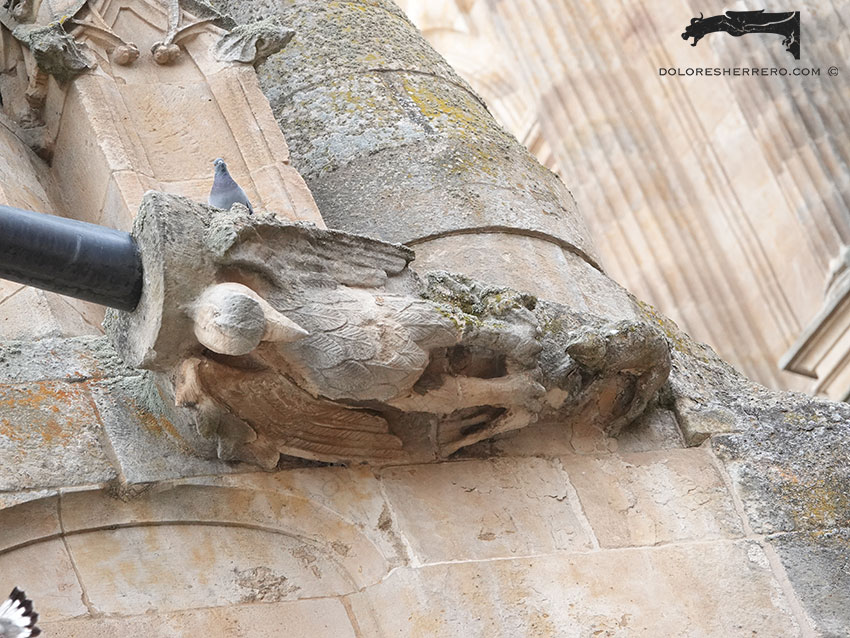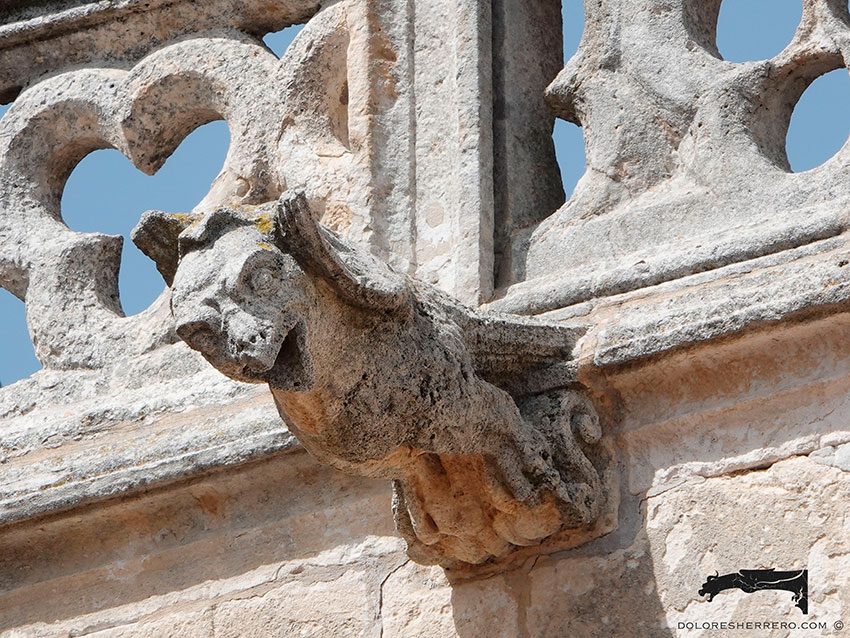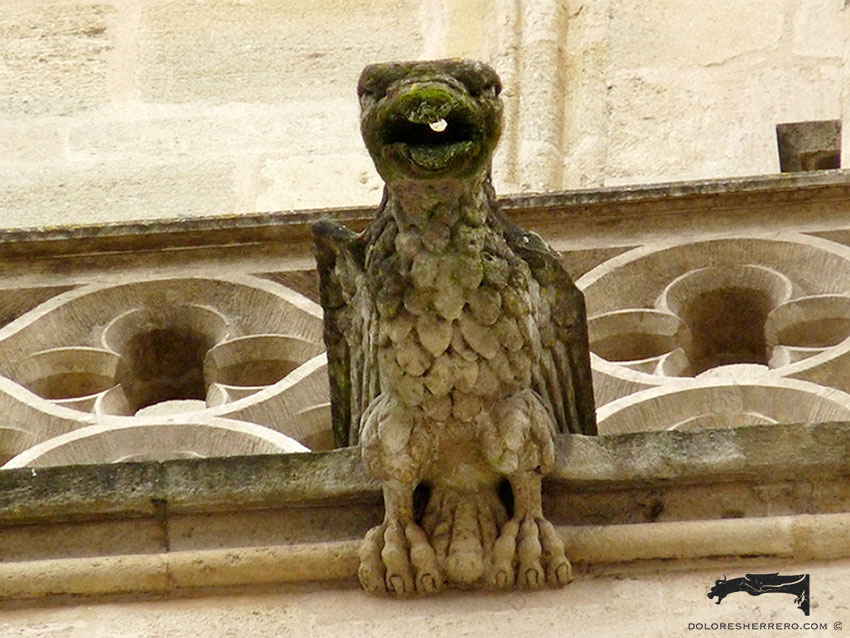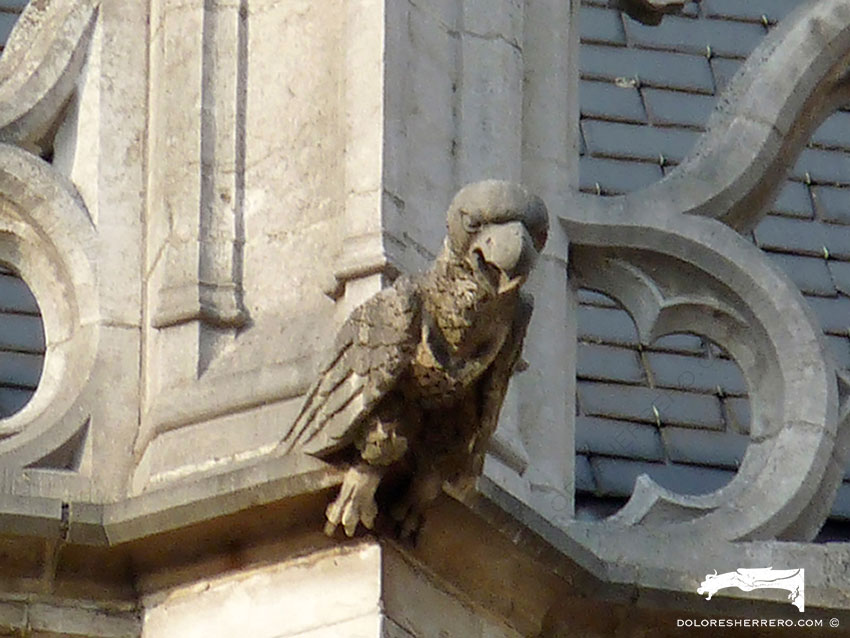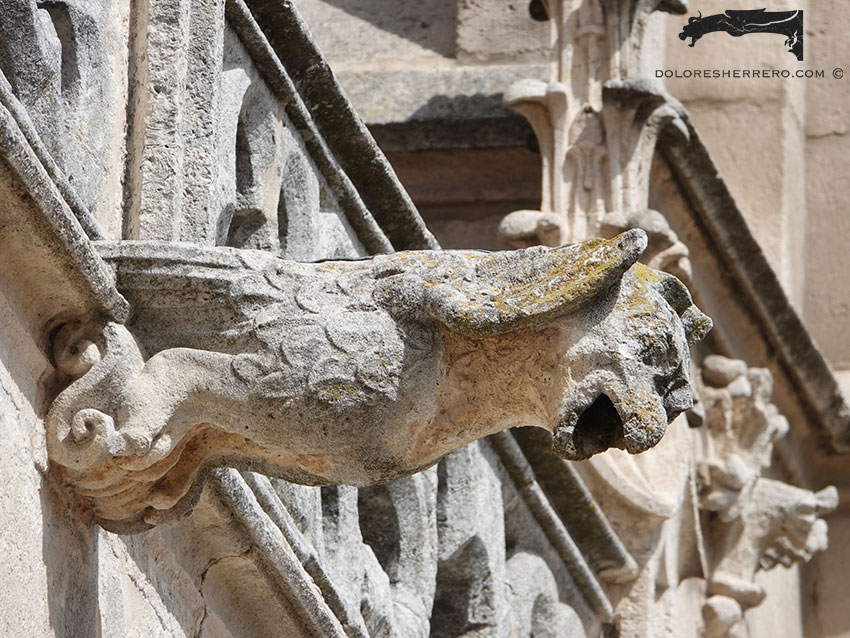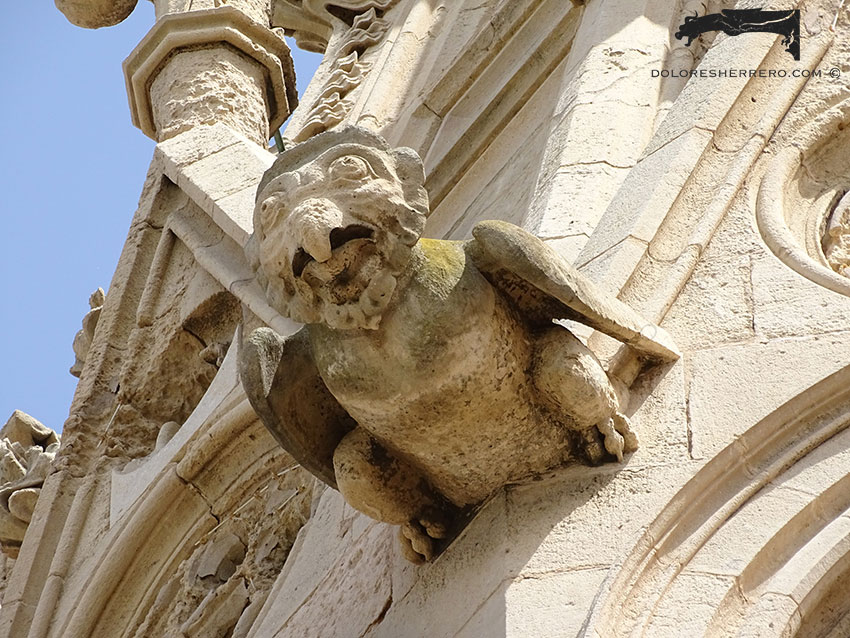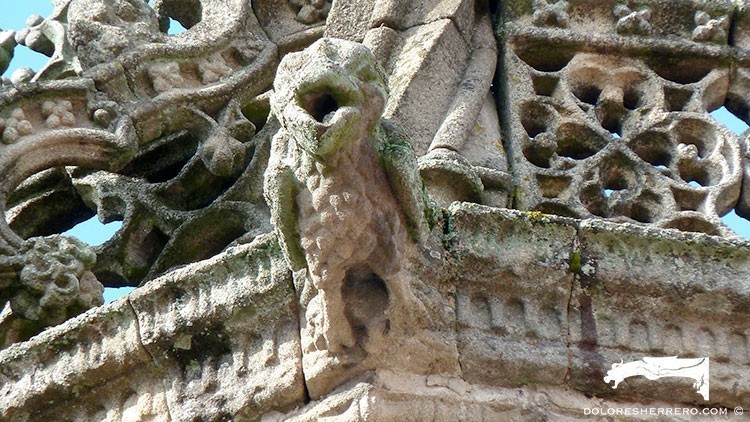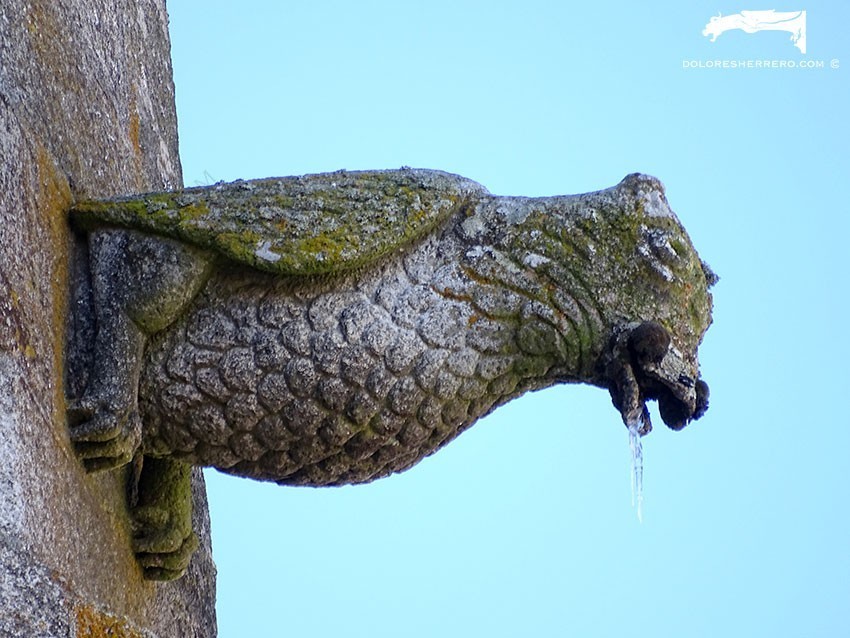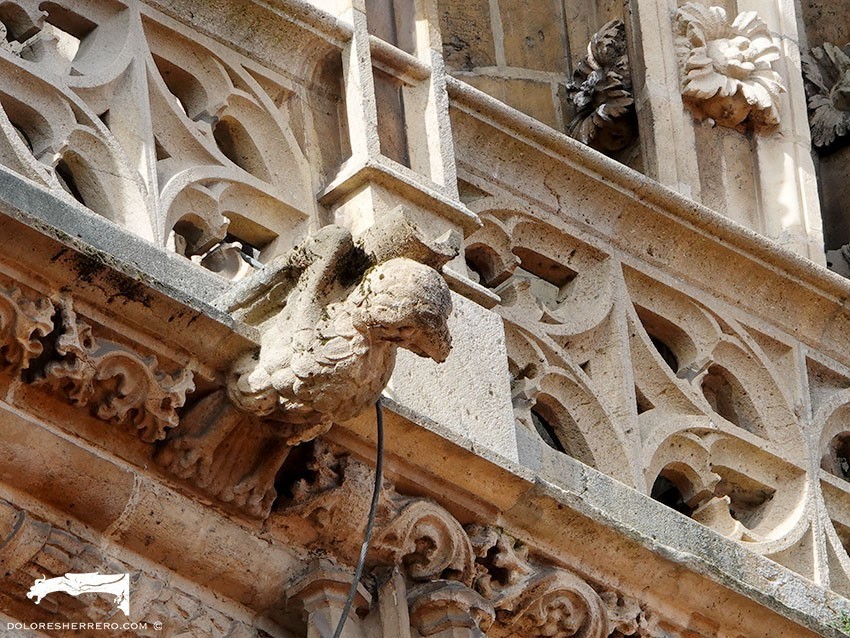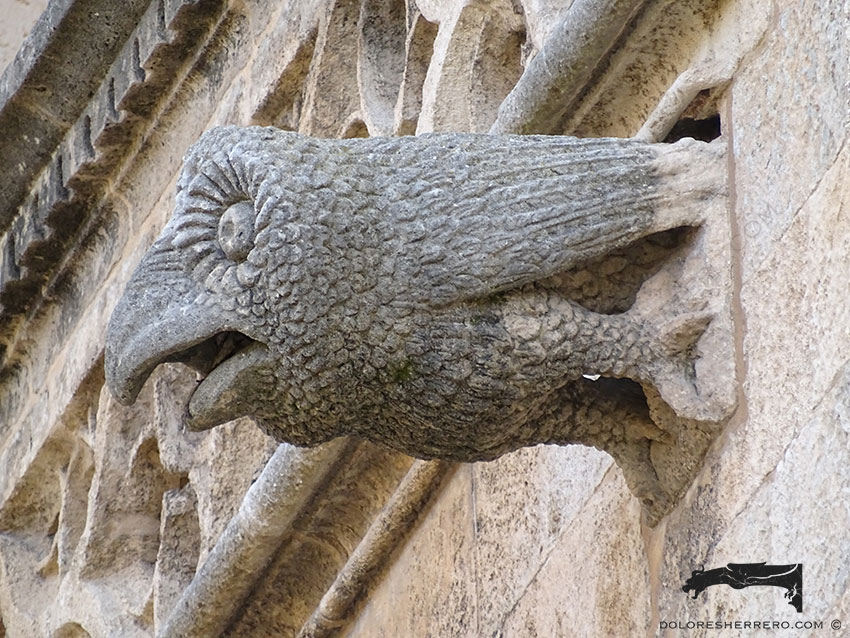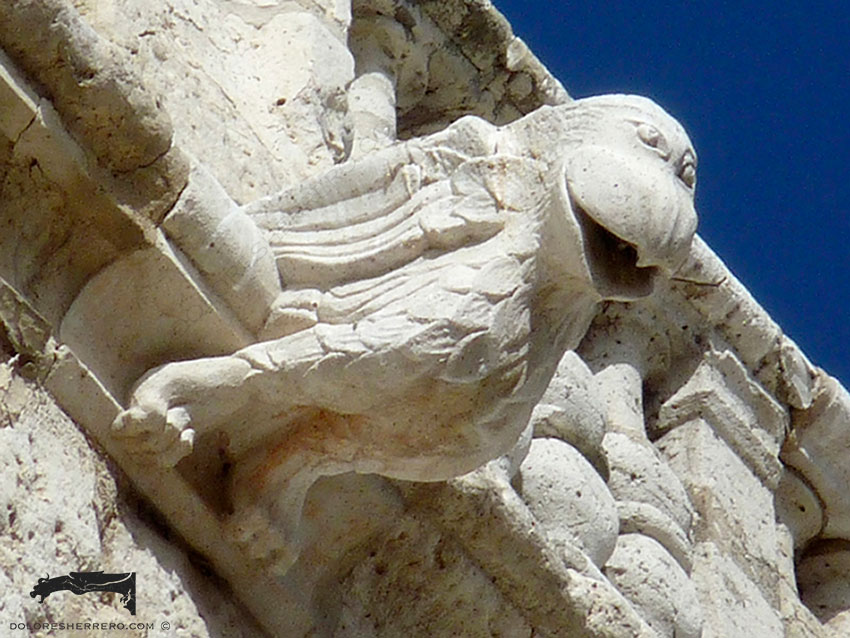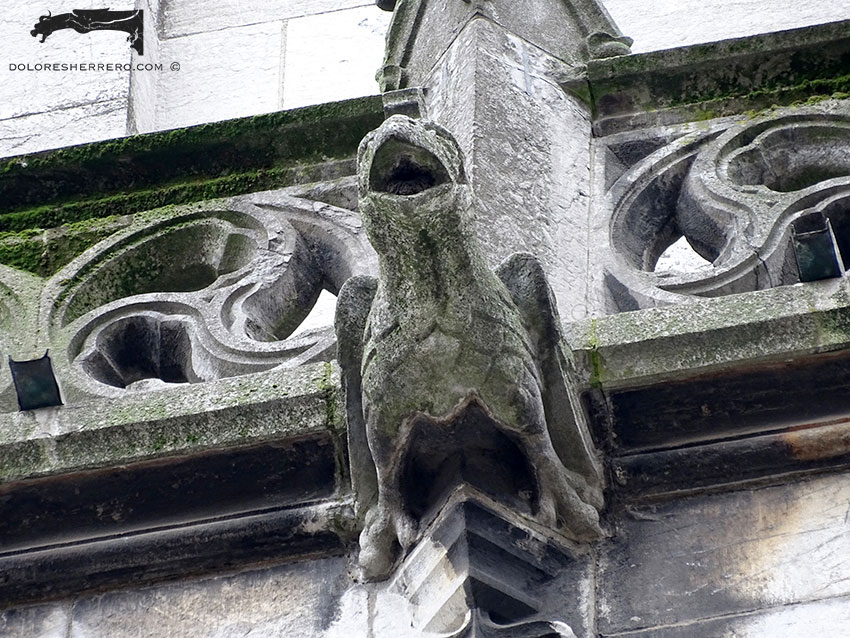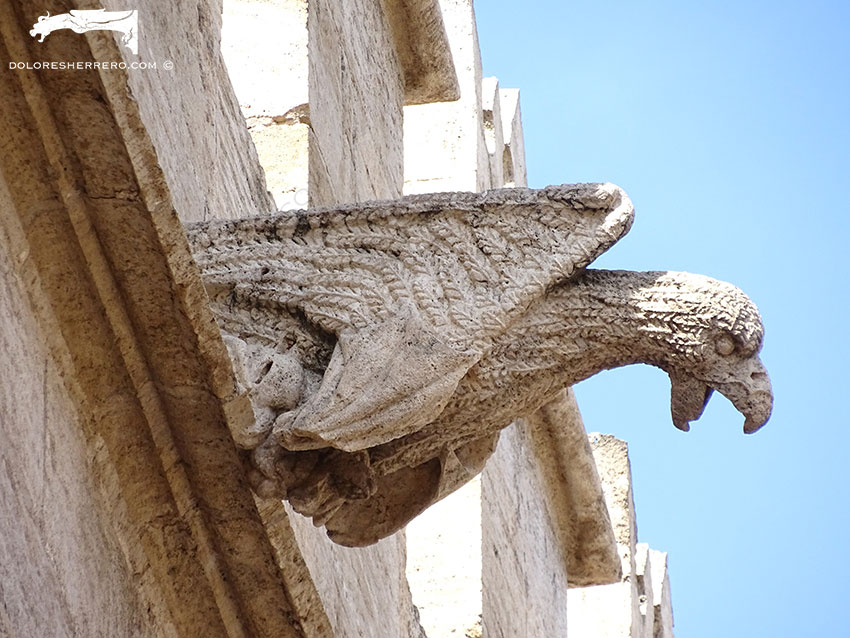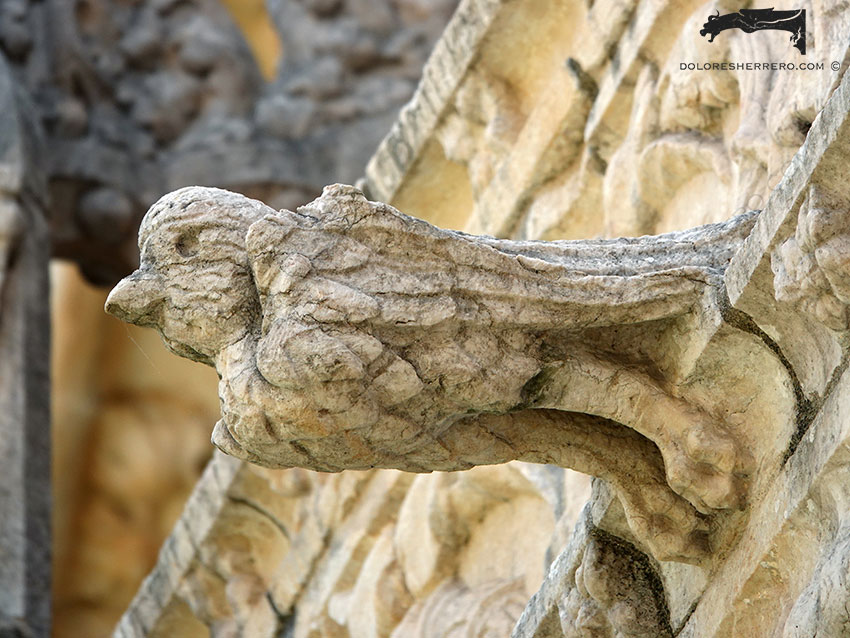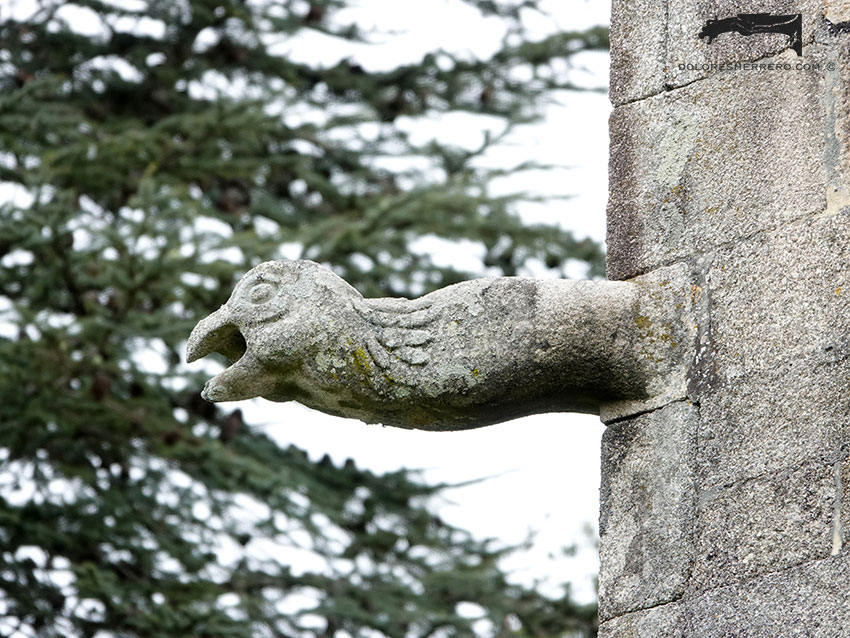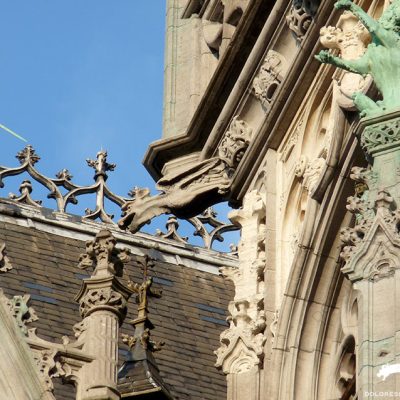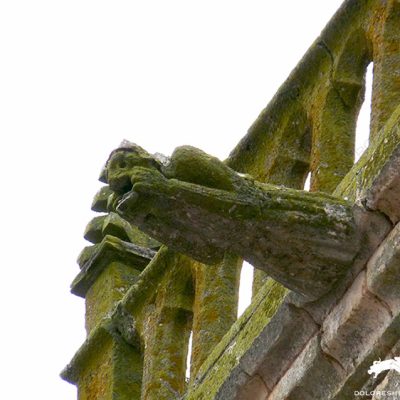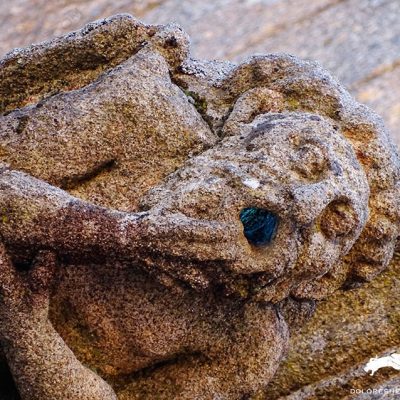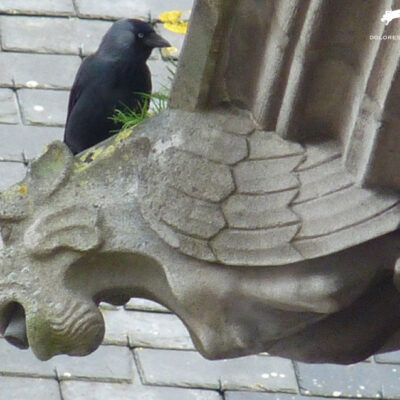Together with the lion and the dog, the eagle is one of the three real animals most often depicted in gargoyles. We saw the symbolism of the lion and the dog in previous posts. Today we’re going to talk about the eagle, the king of birds.
The Eagle and Its Symbolism Throughout History
Throughout the centuries, the eagle has been a symbol rich in meaning, from ancient cultures to its adoption in Christianity.
Ancient Cultures
The eagle has had tremendous symbolic value since Antiquity, in central Asia and later in the eastern Mediterranean.
For the Hindus it was an emblem of Vishnu (one of the most important gods of Hinduism) and in the art of Chaldea (a region of Mesopotamia) it appears as a noble bird that accompanies the king, tames the lion and helps Ninus, the Chaldean Hercules, in his fight against monsters.
Greco-Roman Tradition
In Greece, Plutarch (1st-2nd century historian and philosopher) tells us that the eagle is minister of Zeus, while Pliny (1st century writer and naturalist) even sees it being protected by lightning. Lucian (2nd century writer) says that these birds can bear the brightness of the sun without lowering their eyes, which symbolically means that they can gaze upon the divine light.
Christianity and Spiritual Symbolism
The eagle is a Christological symbol which on ageing looks for a spring, then climbs up to the sun, burning its old plumage and the film covering its cloudy eyes; it then descends back down to the spring, submerging itself three times and recovering its youth. This is how Christians should renew their faith in the spring of living water, which is the Word of God. In Christianity, the eagle became both an image of Christ and of the faithful, and the fable in which it recovers its youth symbolises the resurrection of Christians as well as of God.
Plus, as we know, the eagle is the symbol of St. John the Evangelist and in a general sense it represents Evangelists’ inspiration. Because of this symbolic interpretation, the lectern from which the Gospels are read often takes the form of an eagle.
Negative Interpretations of the Eagle
As for its negative meaning, the image of the eagle was sometimes used to portray Satan. One of the first images used to represent Christ – and by association Christians – was that of a fish. This explains why depictions of an eagle trampling or pecking at a fish were used to give it a demonic meaning. In the Bible it’s referred to as a detestable bird that cannot be eaten, as it is “an abomination” (Lev. 11, 13-14) and it’s also linked to rapaciousness and death: “From there it looks for food; its eyes detect it from afar. Its young ones feast on blood, and where the slain are, there it is” (Job. 39, 29-30).
However, again in connection with its positive powers, the eagle also represents generosity. No matter how great its hunger, it always leaves half its prey for the birds that fly with it.
Beauty and Power of the Eagle in Gargoyles
Leaving aside its symbolism, the eagle is undoubtedly one of the most majestic birds on the planet and one of Nature’s most beautiful creations.
Gallery of Gargoyles Shaped Like Eagles and Other Birds
- New Cathedral of Salamanca (Spain)
- Burgos Cathedral (Spain)
- Bordeaux Cathedral (France)
- Brussels Cathedral (Belgium)
- Burgos Cathedral (Spain)
- Palma de Mallorca Cathedral (Spain)
- Braga Cathedral (Portugal)
- Guarda Cathedral (Portugal)
- Oviedo Cathedral (Spain)
- Palma de Mallorca Cathedral (Spain)
- Palencia Cathedral (Spain)
- New Cathedral of Salamanca (Spain)
- Church of St. Foillan in Aachen (Germany)
- Lonja in Valencia (Spain)
- Jerónimos Monastery in Lisbon (Portugal)
- Meirás Towers (Coruña, Spain)

Astorga Cathedral (Spain)
Bibliography
CHARBONNEAU-LASSAY, L., El bestiario de Cristo. El simbolismo animal en la Antigüedad y la Edad Media, vols. I y II, Palma de Mallorca, José J. de Olañeta, Editor, 1997.
FERGUSON, G., Signs & symbols in Christian Art, New York, Oxford University Press, 1961.
GRIVOT, D., Le diable dans la cathedrale, Paris, Editions Morel, 1960.
MALAXECHEVERRÍA, I., Bestiario medieval, edición y traducción del inglés de I. Malaxecheverría, Madrid, Ediciones Siruela, S. A., 2008.

Doctor of Art History and researcher specializing in the study of gargoyles.
I am Dolores Herrero Ferrio, and my thesis, “An Approach to the Study of Gargoyles of Gothic Cathedrals in Castilla and León”, is dedicated to the study of these fascinating figures.
If you like gargoyles and art history, you will also enjoy my book, “The Gargoyle and Its Iconography,” a book I have written with great care for those interested in the world of gargoyles.
I have created my own Encyclopedia of Gargoyles, a Gargopedia to share with you, where you will discover all the secrets and wonders of these enigmatic sculptures.
I hope you enjoy this Gargopedia as much as I have enjoyed creating it, and remember that each gargoyle has a story to tell, and here you will discover them all.
